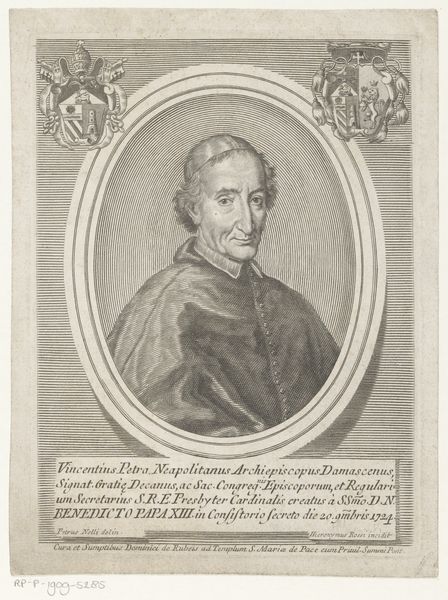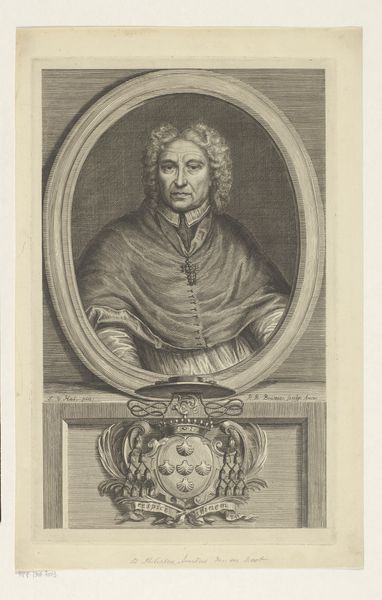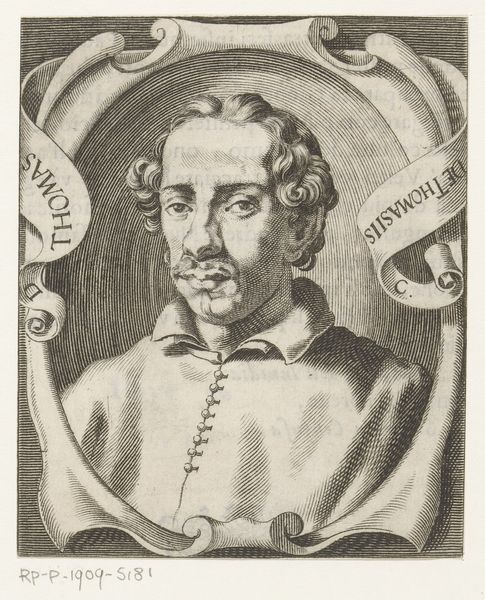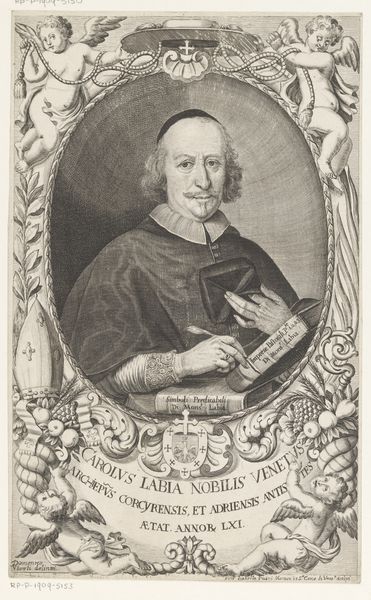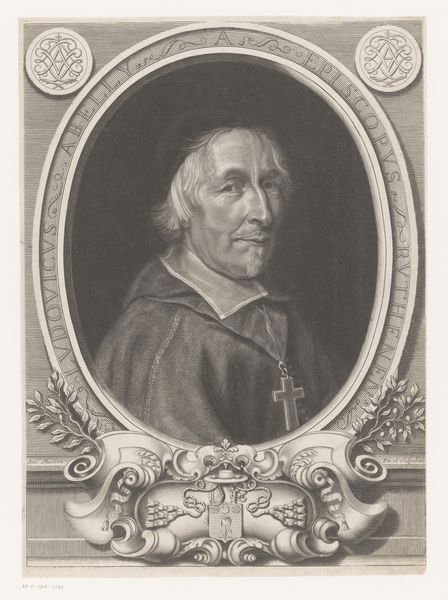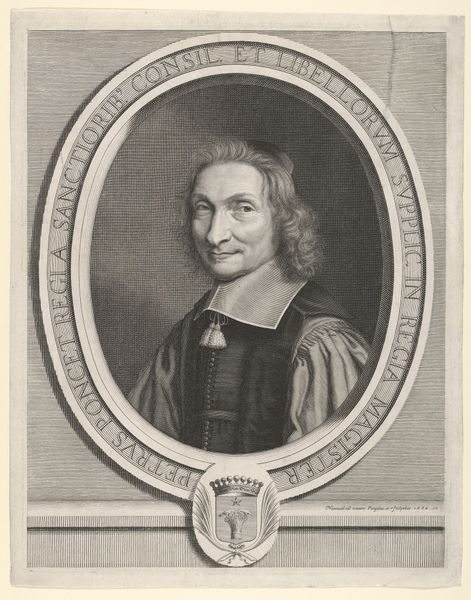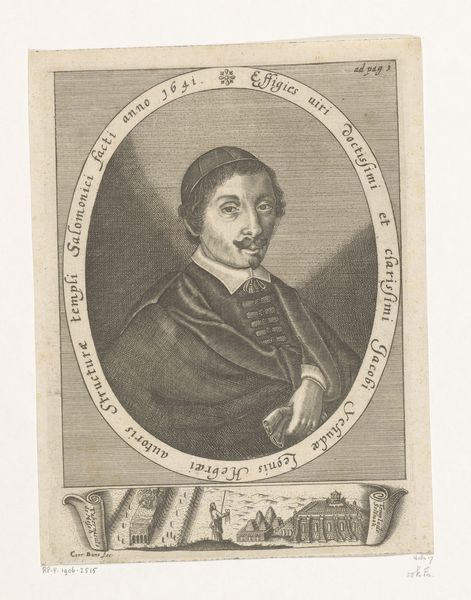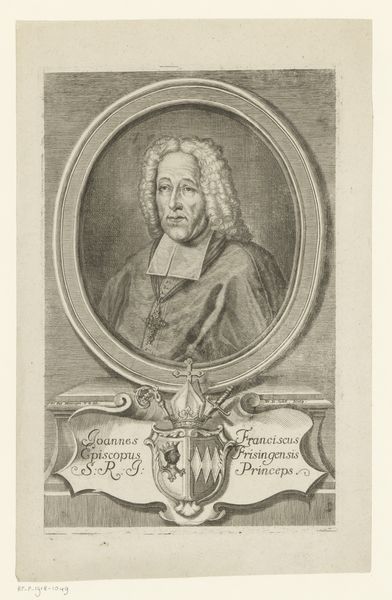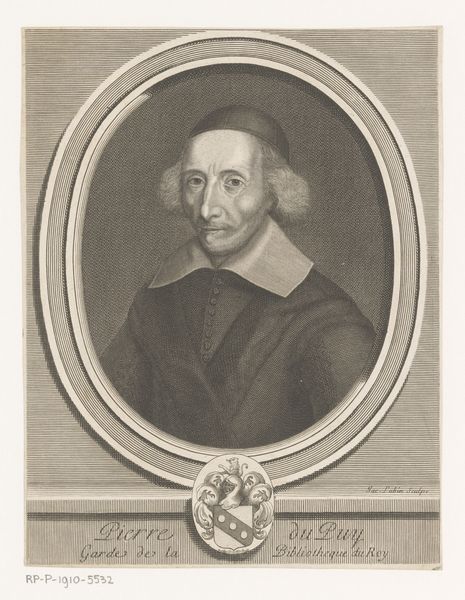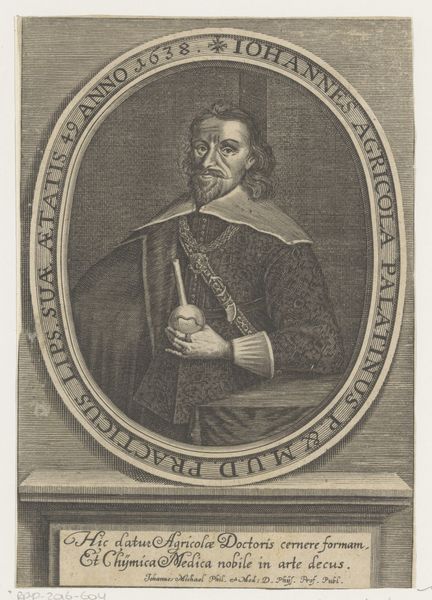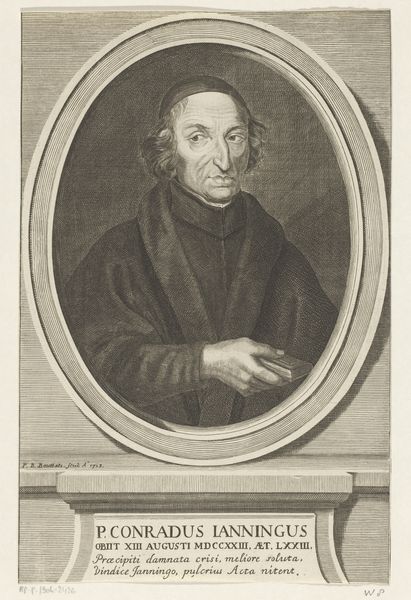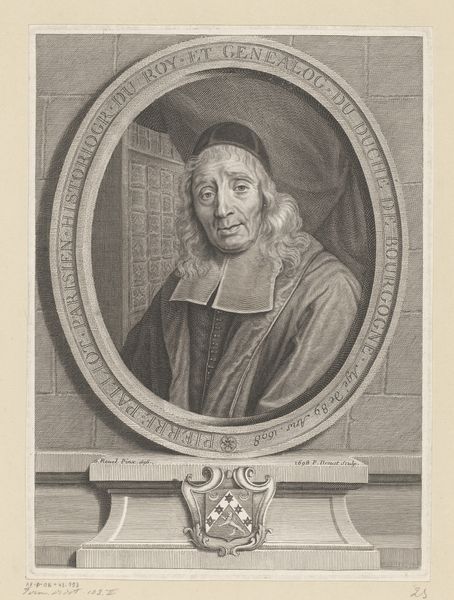
engraving
#
portrait
#
baroque
#
old engraving style
#
portrait drawing
#
history-painting
#
engraving
Dimensions: height 207 mm, width 147 mm
Copyright: Rijks Museum: Open Domain
Curator: Here we have an engraving titled "Portret van Giovanni Maria Lancisi" created sometime between 1673 and 1740 by Johann Georg Seiller. What's your initial reaction? Editor: My first impression is how formal yet delicate it feels. The stippling gives the face a certain softness, even tenderness, which contrasts with the rather rigid pose and architectural surround. Curator: Exactly! That juxtaposition is key. The baroque era was all about grandeur and order, right? Yet, this portrait—ostensibly a celebration of Lancisi—feels more like an intimate character study. The inscription tells us that Lancisi was the Physician to Popes Innocent XI and Clement XI, so someone with immense power and influence. Editor: Power derived from his intellect, access to knowledge, and contributions to medicine. Considering medicine and knowledge have historically been dominated by white males, do you see any challenge to power structures here? He’s depicted with these faint and kind features… how much is power part of that construction? Curator: It’s true the work does seem to somewhat subtly undercut expectations, in line with the subtle hand of engraving compared to painting. And while it reinforces the sitter’s importance, I also find a touch of something melancholy in the subject's eyes—an awareness of his mortality, perhaps? As the artwork seems so ephemeral in its material execution as well, and in contrast to what Baroque represents—the everlasting and timeless. Editor: Maybe. Or it could reflect the weight of his position within those patriarchal and ecclesiastical structures. You know, it also makes me think about how portraits, particularly of powerful figures, were so often used as tools of propaganda. So, could Seiller have had intentions behind this seemingly “intimate” portrayal of Lancisi? I see, almost a modern PR job. Curator: A fair point! It’s always useful to consider what a portrait wants us to believe and who its for, but this engraving, perhaps because it’s slightly less grand than other artworks we might examine, almost makes me think of mortality and intellect over legacy and propaganda. It also makes me want to go back and revisit some old anatomy and botany textbooks! Editor: It encourages looking in, rather than performing outwardly, doesn't it?
Comments
No comments
Be the first to comment and join the conversation on the ultimate creative platform.
